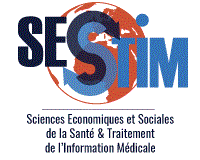Implications of SDHB genetic testing in patients with sporadic pheochromocytoma
Résumé
PURPOSE: Succinate dehydrogenase B (SDHB) associated pheochromocytomas (PHEOs) are associated with a higher risk of tumor aggressiveness and malignancy. The aim of the present study was to evaluate (1) the frequency of germline SDHB mutations in apparently sporadic patients with PHEO who undergo preoperative genetic testing and (2) the ability to predict pathogenic mutations.METHODS: From 2012 to 2016, 82 patients underwent a PHEO surgical resection. Sixteen were operated in the context of hereditary PHEO and were excluded from analysis. Among the 66 remaining cases, 48 were preoperatively screened for an SDHB mutation. In addition to imaging studies with specific radiopharmaceuticals (123I-MIBG or 18F-FDOPA) for exclusion of multifocality/metastases, 36 patients underwent 18F-FDG PET/CT.RESULTS: From the 48 genetically screened patients, genetic testing found a germline SDHB variant in two (4.2%) cases: a variant of unknown significance, exon 1, c.14T>G (p.Val5Gly), and a most likely pathogenic mutation, exon 5, c.440A>G (p.Tyr147Cys), according to in silico analysis. Structural and functional analyses of the protein predicted that p.Tyr147Cys mutant was pathogenic. Both tumors exhibited moderate 18F-FDG PET uptake with similar uptake patterns to non-SDHB mutated PHEOs. The two patients underwent total laparoscopic adrenalectomies. Of the remaining patients, 44 underwent a laparoscopic adrenalectomy, and two had an open approach. Pathological analysis of the tumors from patients bearing two germline SDHB variants revealed a typical PHEO (PASS 0 and 2). Ex-vivo analyses (metabolomics, SDHB immunohistochemistry, loss of heterozygosity analysis) allowed a reclassification of the two SDHB variants as probably non-pathogenic variants.CONCLUSIONS:This study illustrates that SDHx mutational analysis can be misleading, even if structural and functional analyses are done. Surgeons should be aware of the difficulty of classifying new SDHB variants prior to implementing SDHB mutation status into a tailored surgical management strategy of a patient.
| Origine | Fichiers éditeurs autorisés sur une archive ouverte |
|---|
